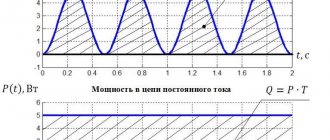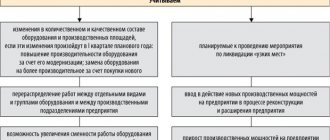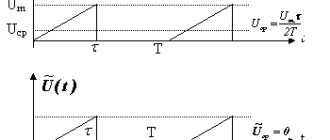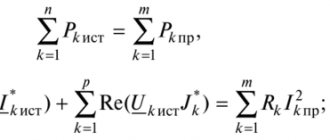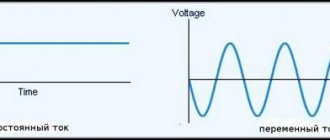To answer the question of how to determine current, you need to divide the electrical voltage by the total number of watts. In this case, you can do all the necessary calculations yourself, or you can resort to a special online calculator.
You can find out the electricity consumption by the current strength of the resistor by multiplying the former by the resistance, expressed in Ohms. The result is a value expressed in volts multiplied by ohms. It turns out ampere.
Note! If there is no resistance, you need to divide the watt indicator by the current energy, that is, you should divide the watts by amperes and you will get the value of electricity in volts. You can understand the power reading through the amount of electricity with electrical voltage by multiplying the corresponding readings from the device.
Expert opinion
Viktor Pavlovich Strebizh, lighting and electrical expert
Any questions ask me, I will help!
Finding the power in a three-phase network is also easy; to determine the total S, use the calculation formula for current and phase voltage. If there is something you don’t understand, write to me!
How to calculate amperage
Amperage is the value of electric current, which is expressed in amperes. You can calculate the amperage like this: I=P/U.
You may be interested in this: Designation of various electrical equipment on diagrams
It is worth pointing out that measuring power through voltage or calculating power from resistance and voltage is possible not only with a formula, but also with a device. To do this, you can use a multimeter with a current clamp or a specialized meter - a wattmeter.
Note! Both work on the same principle, as stated in their instruction manual.
Power, current and voltage are the three components of calculating wiring in a house. Find out all the necessary parameters in any network simply using the formulas presented above. The proper operation of all home electrical equipment and the safety of its owner will depend on these values.
What kind of lighting do you prefer?
Built-in Chandelier
What affects current power
Adding electrical resistance allows you to take into account losses in the connected circuit (load). The formula for finding power for a complete circuit takes into account the parameters of the power source. For a more accurate analysis, the rate of energy consumption per unit volume of conductor (ΔV) should be estimated.
From this expression the dependence of electricity consumption on conductivity is clear. This ratio determines the requirements for the cable products used. If the cross-section is insufficient (high level of impurities), heating increases. A similar result is obtained when connecting a powerful load. At a certain level, thermal destruction of the material will occur.
For your information. This process is the cause of typical emergency situations. To prevent damage, specialized equipment is used - circuit breakers.
Differences in power at constant and alternating voltage
We use the designations of electrical quantities that are accepted in our country:
- P – active power, measured in watts, denoted by W;
- Q – reactive power, measured in reactive volt amperes, denoted by VAR;
- S – total power, measured in volt amperes, designated VA;
- U – voltage, measured in volts, denoted by VA;
- I – current, measured in amperes, denoted by A;
- R - resistance, measured in ohms, denoted by Ohm.
Let us name the main differences between P on a constant current and Q on an alternating electric current. Calculating P for a constant electric current is the simplest. For sections of an electrical circuit, Ohm's law is valid. This law involves only the magnitude of the applied U (voltage) and the magnitude of the resistance R.
Calculation of S (total power) on alternating electric current is somewhat more complicated. In addition to P, there is Q and the concept of power factor is introduced. Algebraically adding the active P and reactive Q, we get the total S.
Calculation of voltage, current and resistance
Ohm's law is designed to find the unknown third if the first and second are known. From this point on, in order to simplify Ohm's law, we will use Ohm's triangle. This is the triangle:
Let's figure out the voltage, to find the voltage using the Ohm triangle, you need to cover the voltage with your hand - U , only I - current and R - resistance remain, the front is a vertical bar, the vertical bar is from bottom to top, this vertical line means multiplication, which means that To find the voltage, you need to multiply the current by the resistance.
Here is the formula: U=I*R , where U is voltage, I is current, R is resistance.
Now let's try to find the current, cover I , now in front of the voltage and resistance there is a horizontal line, horizontal is the line that goes from left to right. A horizontal line means division. This means that to find the current, you need to divide the voltage by the resistance.
The formula is as follows: I = U\R , where I is current, U is voltage, R is resistance.
Let's find the resistance, close R , then we will again get a horizontal line in front of the voltage and current, which means we need to divide.
The formula for calculating resistance is: R=U\I , where R is resistance, U is voltage, I is current. So, we learned how to use Ohm's triangle and learned about Ohm's Law. Now, perhaps, let's learn from examples.
Formula for calculating wire cross-section and how the wire cross-section is determined
Quite a lot of questions are associated with determining the cross-section of the wire when constructing electrical wiring. If we delve deeper into electrical engineering theory, the formula for calculating the cross section looks like this:
Of course, in practice, this formula is used quite rarely, resorting to a simpler calculation scheme. This scheme is quite simple: the current strength that will act in the circuit is determined, after which the cross-section is determined according to a special table. You can read more about this in the material – “Wire cross-section for electrical wiring”
Let's give an example. I have a 2000 W boiler, what size wire should it be to connect it to household electrical wiring? First, let's determine the current strength that will act in the circuit:
As you can see, the current strength is quite decent. We round the value to 10 A and refer to the table:
Thus, our boiler will require a wire with a cross-section of 1.7 mm. For greater reliability, we use a wire with a cross-section of 2 or 2.5 mm.
Expert opinion
Viktor Pavlovich Strebizh, lighting and electrical expert
Any questions ask me, I will help!
In a classic device, a measured current passes through an electromagnetic coil, which creates a magnetic field that causes the magnetic needle to deflect. If there is something you don’t understand, write to me!
how to find resistance?
power calculation is also called resistance calculator because it helps to calculate the resistance calculation. Once the voltage (V) and current (I) are given, you can determine the resistance using a simple formula for resistance.
Resistance formula:
[Resistance (R) = Voltage (V) ÷ Current (I)] R (Ohms) = V (volts) ÷ I (amps)
For example:
Find the value of an unknown resistor that drops 5 V when a current of 20 mA flows through it.
Solution: Resistance (R) = Voltage (V) ÷ Current (I) in amperes; R = 5 V ÷ 20 mA; R = 250 Ohm
What does current power depend on?
Electric current strength and voltage are the two main components that make up this indicator. In practice, this can easily be explained using the example of a small light bulb receiving a current of 1 A at a voltage of 1 V. Its power will be 1 W.
A more realistic example is accounting for consumed electricity using the formula W=IUt, where t is the operating time. The higher it is, the greater the volume of electricity and the higher the bill for its payment in the utility bill.
Calculation of resistance and power of heating elements calculator |
Its design, methods for determining a breakdown on the body, and how to check its serviceability and performance are considered!
Expert opinion
Viktor Pavlovich Strebizh, lighting and electrical expert
Any questions ask me, I will help!
As soon as the impedance of each such circuit is calculated, the circuit is redrawn, but instead of the circuits a resistor is drawn. If there is something you don’t understand, write to me!
Ohm's Law Calculator:
The online calculator team has provided a simple and effective tool known as Ohm's Law Calculator through which you can easily find out the value of Voltage (V), Current (I), Power (P) and Resistance (R). relative to the simple Ohm's law formula.
However, you need to know two of these values in order to calculate the remaining two values.
Therefore, remember that you will receive results regarding the standard units you choose!
Parallel connection of resistors
When resistors are arranged in parallel in a network, they have a common point of contact at the input and output. In this case, the total voltage will correspond to the voltage value on each segment, but the current will be summed up (I rev = I1 + I2 + I3). This relationship is of great importance for practical application and is called the branched chain law.
Despite the fact that the total current in a chain of resistors connected in parallel at the output is equal to the sum of the currents in an independent branch, it may differ for a particular section. This is due to the same Ohm's law, subject to a difference in resistance. To find out the current strength on each resistor in the corresponding branch, you need to know their resistance. With a parallel connection, the voltage in a separate section is a constant value. Accordingly, the current strength of the individual resistor is easily calculated using Ohm’s law for a section of the circuit.
Final words of the online calculator:
Our Power Calculator is a simple tool that uses the simple formula of Ohm's Law to determine Voltage (V), Resistance (R). Current (I) and power (P).
Other Languages: Ohms Law Calculator, Ohms Lov Lommeregner, Ohmsches Gesetz Rechner, Ohmin Laki Laskuri, Strømkalkulator, Kalkulator Ampere Watt, Ohm Hesaplama, Prawo Ohma Kalkulator, Calculadora Lei De Ohms, حساب قانون أوم, Calculateur Loi D'ohm, Calculadora Ley De Ohm, Calcolatore Ohm, オームの法則計算, Ohmův Zákon Kalkulačka, 옴의 법칙 계산자
how to find power?
The above calculator will help you find power using a simple power formula. If the voltage and current calculation for power are specified, then the power value can be easily calculated.
Strength formula:
Power (P) = Voltage (V) * Current (I)
For example:
If applying a voltage drop of 15 across a resistor causes a current of 10 mA to flow through it, then how to estimate the power dissipated across it.
Solution: P = V * I; P = 15 V * 10 mA; P = 0.15 W
Well, it's time to learn about the limitations of Ohm's law.
Limitations of Ohm's Law:
- Keep in mind that Ohm's Law cannot be applied to one-way networks - these networks contain one-way elements including diodes, transistors, etc., which means that these elements do not have the same voltage-to-current ratio for both directions of current.
- Optimistic studies show that Ohm's law does not apply to non-linear elements - these are elements in which the current is not directly proportional to the applied voltage, which means that the resistance value of these elements changes for different voltage values and calculate the current by power. Examples of nonlinear elements: thyristor, electric arc, etc.
